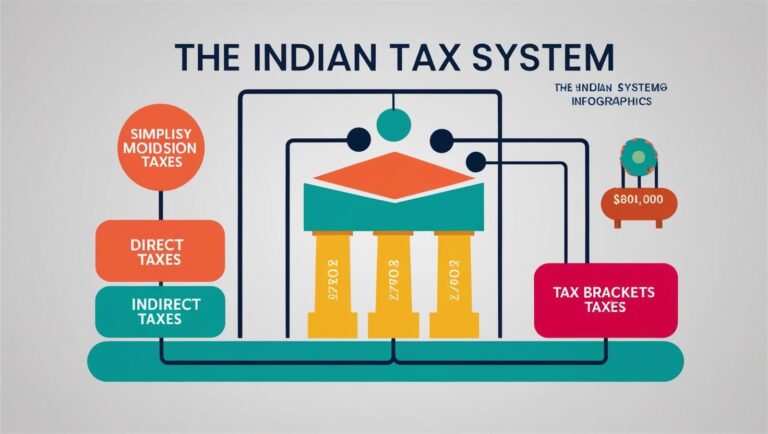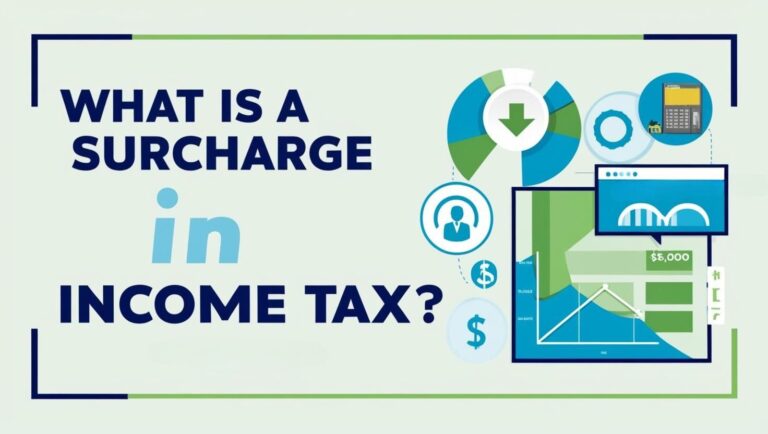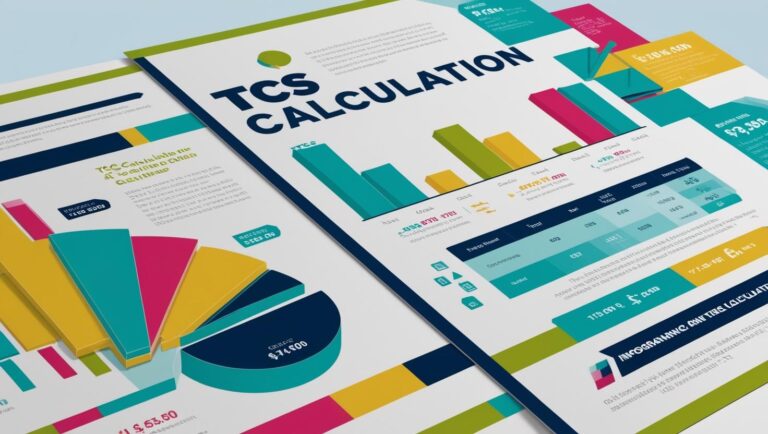Demystifying Trading Tax in India: A Guide for Professionals
Introduction
As the popularity of trading activities continues to rise in India, understanding the nuances of trading tax has become increasingly vital. In fact, according to a report from the National Stock Exchange (NSE), the number of active retail traders in India has increased by over 60% in the past two years. With this surge in participation comes the need for professionals to navigate the complexities of trading tax effectively.
For tax professionals and accountants, understanding how trading income is taxed is crucial to providing accurate advice to clients. This blog will cover essential taxation concepts, including capital assets vs. trading assets, tax on trading income, and practical tips for filing income tax returns (ITRs) accurately for various forms of trading income.
What is Trading Tax in India?
Trading tax in India is governed by the Income Tax Act, which outlines how different types of trading gains are taxed. The tax treatment depends on the nature of the asset and how long it is held before being sold.
There are mainly two types of trading gains:
- Short-Term Capital Gains (STCG): Profits from the sale of assets held for less than three years.
- Long-Term Capital Gains (LTCG): Profits from the sale of assets held for more than three years.
In India, these gains are taxed differently. Additionally, understanding the distinction between capital assets and trading assets (also known as stock-in-trade) is essential for determining how trading activities are treated for tax purposes.
Key Taxation Concepts Every Professional Should Know
Short-Term and Long-Term Capital Gains Tax (STCG and LTCG)
Short-term and long-term capital gains are key concepts in trading tax.
- STCG: If you sell a security within three years of purchase, the gains are classified as short-term and taxed at 15% (for listed shares and equity mutual funds).
- LTCG: For assets held for more than three years, the gains are classified as long-term. As of now, the tax rate on LTCG for listed equity shares is 10%, but only if the gain exceeds ₹1 lakh in a financial year.
Understanding when profits exceed the basic exemption limit and the applicable tax rates can help you calculate your client’s tax liability accurately.
Speculative vs Non-Speculative Business Income
Another important distinction is between speculative and non-speculative business income:
- Speculative Gains: Derived from activities like intraday trading, where trades are completed within the same day. These gains are treated as business income and taxed at the individual’s applicable income tax rate.
- Non-Speculative Income: Includes profits from delivery-based trading, where shares are bought and sold over a longer duration. These profits are considered capital gains and are taxed based on the holding period (STCG or LTCG).
The key difference here lies in the way profits are reported and taxed, requiring specific ITR forms for each.
Presumptive Taxation Scheme
For small traders with a turnover below a specified threshold (currently ₹2 crore), the Presumptive Taxation Scheme (Section 44AD) allows them to declare 8% of their turnover as income, avoiding the need for detailed accounting. This is a beneficial scheme for those opting for a simpler tax filing process.
Filing Your Income Tax Return for Trading Income
Choosing the Right ITR Form
The right Income Tax Return form depends on the type of trading income your client has:
- ITR 3: For individuals with income from business or profession (including speculative and non-speculative trading).
- ITR 2: For individuals earning income from capital gains (e.g., sale of shares).
- ITR 4: For those opting for the Presumptive Taxation Scheme.
Selecting the appropriate form ensures proper reporting and avoids any complications during tax filing.
Calculating Total Tax Liability
To calculate the total tax liability:
- Include gains from trading activities under capital gains or business income.
- Add any other sources of income (salaries, rental income, etc.).
- Apply the relevant tax rates for STCG, LTCG, and business income.
- Deduct any available exemptions, deductions, or allowances, such as those under Section 80C.
Common Mistakes to Avoid
Tax professionals should be aware of the common mistakes traders make while filing taxes:
- Misclassifying speculative income as non-speculative or vice versa.
- Failing to report all forms of trading gains, including STCG, LTCG, or business income.
- Not utilizing available deductions and exemptions to reduce taxable income.
To avoid these mistakes, it’s crucial to maintain accurate records and ensure all income sources are correctly reported.
Trading Taxes for the Financial Year 2024-25
The financial year 2024-25 has seen some changes in trading taxes under the Income Tax Act:
- New provisions have been introduced to clarify the taxation of virtual digital assets (e.g., cryptocurrencies), which may be relevant for certain traders.
- The tax rate on long-term capital gains has been adjusted for certain categories of assets.
- Deadlines for tax filings have been extended to accommodate the growing volume of traders.
It’s important for tax professionals to stay updated with these changes to ensure compliance for their clients.
Benefits of Being Tax-Compliant as a Trader
Tax compliance offers several benefits:
- Avoidance of penalties or legal issues during tax audits.
- Enhanced credibility when applying for loans or credit facilities.
- Better financial health, as accurate tax filings ensure transparency.
Being diligent about trading taxes also contributes to smooth audits and more robust financial planning.
Practical Tips for Tax Professionals Supporting Traders
Tax professionals can support their clients by offering practical advice:
- Keep detailed records: Track all trades, including dates, amounts, and the type of transaction (speculative or non-speculative).
- Use software tools: Trading software can simplify the process of tracking and categorizing trades, making tax filing easier.
- Stay updated on changes: Regularly review updates to tax regulations that may affect trading taxes, including new provisions for virtual assets.
By following these steps, professionals can help their clients navigate the complexities of trading tax with ease.
Learn more about the tax system in our The Indian Tax System: What You Need to Know.
Conclusion
In summary, understanding trading tax in India is crucial for both tax professionals and traders. Key takeaways include the distinction between trading gains, the relevant tax rates, and the importance of accurate reporting on ITR forms.
Tax professionals are encouraged to stay proactive and consult with experts for clarity on complex issues, ensuring compliance with tax regulations and minimizing errors.
For ongoing updates on trading tax laws, consider subscribing to newsletters or exploring additional resources related to the ever-evolving landscape of tax on trading income in India.
FAQs
What is trading tax in India?
Trading tax in India refers to the taxation of profits earned from various trading activities, including the sale of stocks, shares, and other financial instruments. It is governed under the Income Tax Act, with taxes varying based on the type of asset and holding period.
How are short-term and long-term capital gains taxed?
Short-term capital gains (STCG) are taxed at 15% for listed securities held for less than three years. Long-term capital gains (LTCG) are taxed at 10% for assets held for more than three years, subject to a threshold of ₹1 lakh in gains per financial year.
What is the difference between speculative and non-speculative income?
Speculative income arises from activities like intraday trading, where transactions are completed on the same day, and is taxed as business income. Non-speculative income comes from delivery-based trading, taxed as capital gains based on the holding period (STCG or LTCG).
What is the presumptive taxation scheme for traders?
The presumptive taxation scheme (Section 44AD) allows small traders with a turnover below ₹2 crore to declare 8% of their turnover as income, simplifying the tax filing process and avoiding detailed accounting.
Which ITR form should traders use to file their taxes?
Traders need to select the appropriate ITR form based on their income sources:
- ITR 3 for business income, including speculative and non-speculative trading.
- ITR 2 for capital gains from trading activities.
- ITR 4 for those opting for the presumptive taxation scheme.
What are common mistakes to avoid when filing trading taxes?
Common mistakes include misclassifying trading income, failing to report all forms of income, and not utilizing available deductions. Accurate record-keeping is essential to avoid such errors.
How can tax professionals help traders manage their tax obligations?
Tax professionals can assist by ensuring accurate reporting of trading gains, advising on the correct ITR forms, suggesting tax-saving strategies, and helping traders stay compliant with tax regulations.







